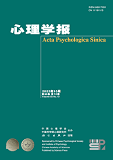Given the high prevalence and its extensive possible adverse outcomes, a large number of theoretical and longitudinal studies have explored the development of social anxiety, but the research findings are inconsistent or even contradictory in preschool childhood, late childhood, and adolescence. In addition, there is still debate between trait theory and state theory of social anxiety, and there is also a lack of study on the age trend of social anxiety stability.
To clarify the above controversies and accurately characterize the age trend of the mean level and the stability of social anxiety, this study conducted a meta-analysis of longitudinal studies involving social anxiety. After pre-registering the study protocol on PROSPERO, we searched literature in six databases (CNKI, Wanfang Data, Web of Science, ProQuest, PubMed, and EBOSCO). In addition, we also backtracked the references cited in previous meta-analyses and reviews. Ultimately, a total of 192 independent samples (N = 170, 192) from 173 longitudinal studies were included in the current meta-analysis. In order to quantify the trajectory of social anxiety more precisely, we divided the sample into 11 age groups according to the mean age of the sample between two adjacent measurement waves, and estimated the mean-level change and stability for each age group. The standardized mean difference (d) between two adjacent waves is used to estimate mean-level change, whereas the correlation coefficient (r) is used to estimate stability. Science most of the included studies reported multiple effect sizes, and these multiple effect sizes were most likely dependent, which violated the basic assumption of independent effect sizes in the conventional meta-analytic methods. We applied the three-level meta-analysis approach to handle such data-independency among effect sizes.
Results showed that: (1) The mean level of social anxiety showed a gradual decline from toddlerhood to young adulthood, with only slight increase in mid-adolescence. (2) In terms of rank-order stability, social anxiety rose slowly from toddlerhood to preschool childhood, then swiftly dropped to a low point in elementary childhood, recovered gradually after mid-adolescence, and stabilized at a high level in young adulthood. (3) The mean-level change of social anxiety was not affected by the study characteristics, the sample characteristics, and the variable characteristics. (4) The rank-order stability of social anxiety was moderated by written language, continent, culture, gender, and assessment mode. (5) The stability of social anxiety was a logarithmic function with time lag. Specifically, with the increase of time lag, the stability declined first quickly and then slowly, and almost reached a plateau after 6 years. (6) The results of moderator test for publication status, Egger's test, and Begg's test indicated the absence of publication bias in this meta-analysis.
This study makes a valuable contribution in characterizing the age-specific trends and stability of social anxiety from toddler to young adult by using the meta-analytic method. We conclude from this study that, in terms of mean level, the trajectory of social anxiety generally supports the personality maturation hypothesis. For stability, similar to personality traits, social anxiety tend to be a trait rather than a state construct. Overall, this study provides a new perspective for exploring the lifelong development of social anxiety.




